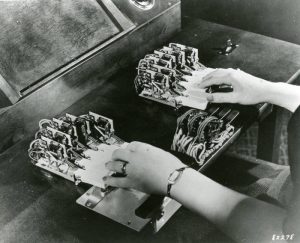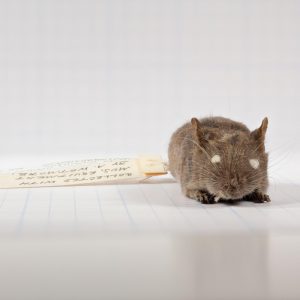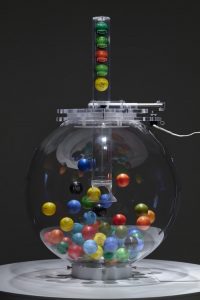Natalie Jeremijenko‘s Ooz project is an experiment in “interspecies communication.”
Like a zoo, Ooz is a series of sites where animals and humans interact. But it’s a place where animals interact with humans by choice rather than because they’re caged. Throughout the Ooz communication habitats (horses, water striders and bats), the animals can learn to control the human spectators by pressing the appropriately designed button or lever that communicates in human speech. For example, a button may trigger the recorded voice: “Yo! If you are going to stare, how ‘bout inser ting 25cents and delivering a dose of that beaver biscuit!”
The project explores whether science has learned how to design habitats attractive enough to entice voluntary fur- or feather-bearing tenants.
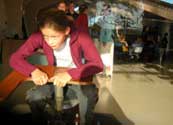
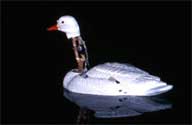
The first experiment is about goose communication, human participants saddle up in a “goose chair” and contort their bodies to remote control a robotic goose out on the water in hopes of successfully communicating with live geese. “We have a kind of schizophrenic relationship with ‘sub-humans,'” Jeremijenko comments. “It’s either ‘Let’s protect the cute, fuzzy animals’ or ‘Let’s shoot them.’ Ooz is a way of exploring other options.”
The robotic goose was part of the Save the Robots exhibition, at The Ark, Dublin, till September 30.
Natalie Jeremijenko collaborated with Phil Taylor to create For the Birds, the second part of the Ooz projects. For the Birds is a series of perches equipped with sensors and placed in MASS MoCA’s courtyards for birds to land on. When a bird lands, it triggers lights, dispense food or squirt water but it also emits an accompanying audio files that translate bird concerns into English. Spectators should behave accordingly, for example by supplementing the birds’ diet with the Bird Bar and other delectables available in the museum store. Through the day-to-day use of the perches, Jeremijenko believes that the birds will learn to use the perches to rudimentarily communicate with MASS MoCA visitors.
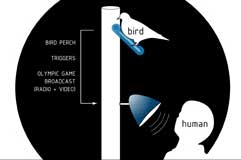
The work is part of the exhibition Becoming Animal: Art in the Animal Kingdom, which runs through February 2006 at the MASS MoCA.
Via Organism.

